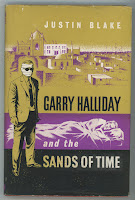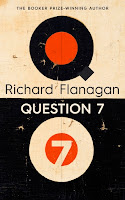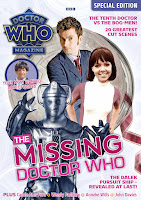After the events of the previous adventure and the death of the Voice, Garry and his co-pilot Bill Dodds return from Tripoli to their office/home on an airfield in Kent. There they discover that, in their absence, a rival charter airline has taken most of their business, undercutting their prices by 25%. Garry doesn’t exactly run his airline to get rich so the Flying Foxes company must be running at a loss to put him out of business. That means they’ve got money behind them. When Garry looks into it, and watches a flight coming into land (as seen on the cover of the book), he spots something suspicious. Soon, the trail leads him to Rome where a drug developed to prolong life has the opposite effect…
As before, it's a lively, fast-moving, twisty plot involving adventures overseas and some fun, funny set pieces. Sadly, new villain da Rica - aka "the spider" - isn't a patch on the Voice. He's an American hoodlum who takes copious amounts of the BDM drug that he's also involved in smuggling, but there's little sense of a personality. The Voice was so distinctive, he was a selling point for the series; da Rica is a bit generic.
It's odd, too, that the elements set in Rome come so late rather than being part of the sell of the new story from the start. Instead, the opening instalments are set in Kent, around the airfield where Garry Halliday is based and in a nearby lake. It's not especially exciting. When a villain then breaks into Garry's office/home, I was reminded of a similar sequence in the second story - the series repeating itself.
Even so, there's plenty of fun stuff here. One chapter opens by telling us that Bill Dodds "shows enormous intelligence and perspicuity" (p. 25) in what is to follow, underlining his active role in proceedings, and not merely as comic foil. When the plot involves convincing the public that Garry has been killed, Bill gamely heads up to BBC TV Centre and then takes part in a live interview for Tonight in the studios at Lime Grove, with a cameo by real-life presenter Cliff Michelmore. That's not mentioned in the scant surviving paperwork relating to the series - I wonder if it happened on screen?
The supposed death of Garry Halliday causes some problems for the plot. The "death" is contrived to fool da Rica, who duly reads obituaries in the press. But the plot also involves da Rica and his henchperson Luigi not knowing what Garry looks like and so mistaking him for someone else. Presumably at least one obituary ran a photograph.
Similarly, the plot involves smuggled quantities of the age-defying drug, BDM. Before scientific analysis identifies what this is, Garry tries some of it to test that it's not cocaine or heroin - which I don't think is best practice for airline pilots. Other characters also try the drugs. They continue to do so even after it becomes apparent that one batch of the drug is in fact deadly.
The novelisation is surely based on the original storyline and scripts that Bowen and Bullmore delivered before they were reworked by in-house writer David Whitaker, in liaison with uncredited script editor Richard Wade and producer Richard West. It's difficult to know how different the TV version was - though, as I'll detail when I get to the production notes on the episode guide - Bowen and Bullmore clearly felt it departed a great deal from what they'd intended.
But one practical change is evident. In the novelisation, drugs are tested on 20 batches of rabbits, labelled A to J. The chapter "The Secret of Batch J" reveals that one of these batches is deadly. On TV, the same instalment was "The Secret of Batch 3", suggesting a reduced scale, perhaps no more than three hutches, manageable on set.
I wonder, too, how much a moment in which Sonya Delamere - Bill Dodd's fiancee, a returning character who has so little to do in this serial - watches the new girl reflected feelings of the cast.
"The little pang of jealousy Sonya felt was because Vicky was going off to do the kind of thing she used to do herself. But Sonya knew well enough why Vicky had to do it, and being a sensible girl, she stifled her pang, and kept it to herself." (p. 76)
It's an engaging, exciting story but what tantalises me most is how accurate a record it is of the TV version and of what the cast and crew may have felt.
ETA: There's now a full entry on the TV version of this story at the Garry Halliday episode guide.




























